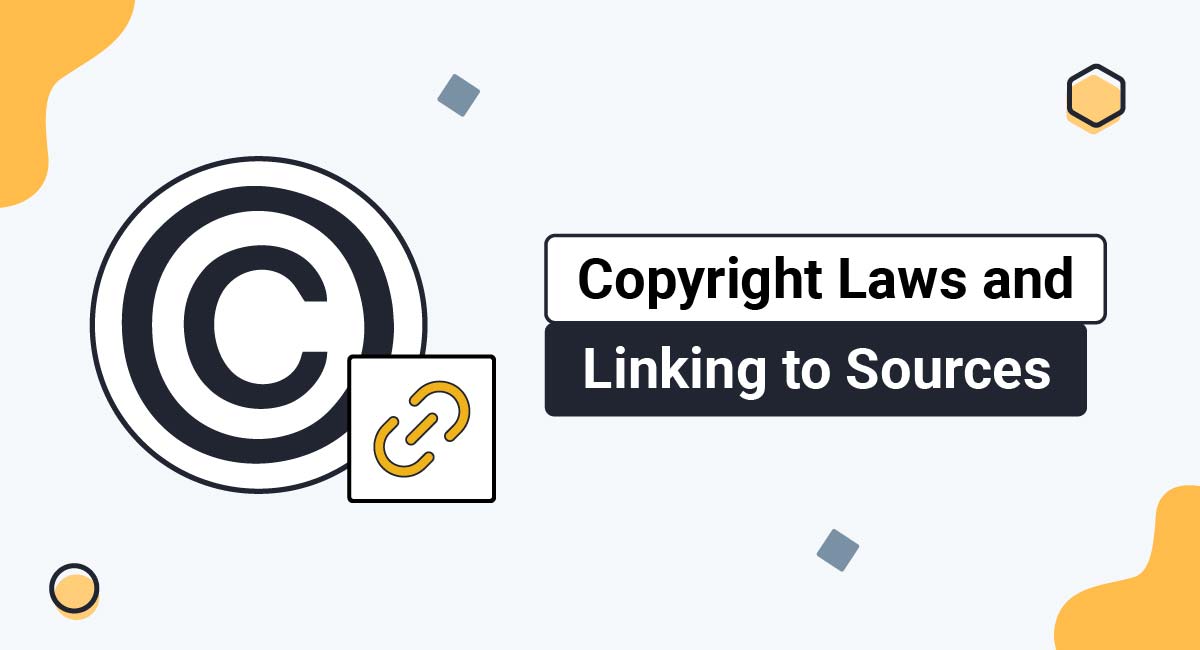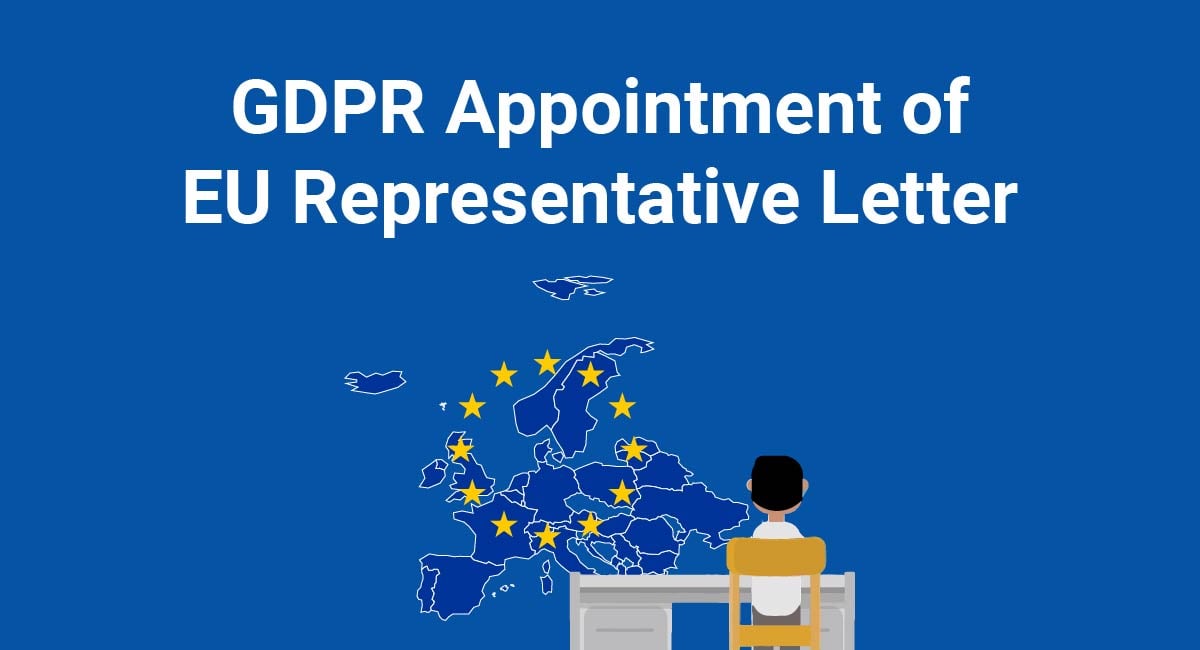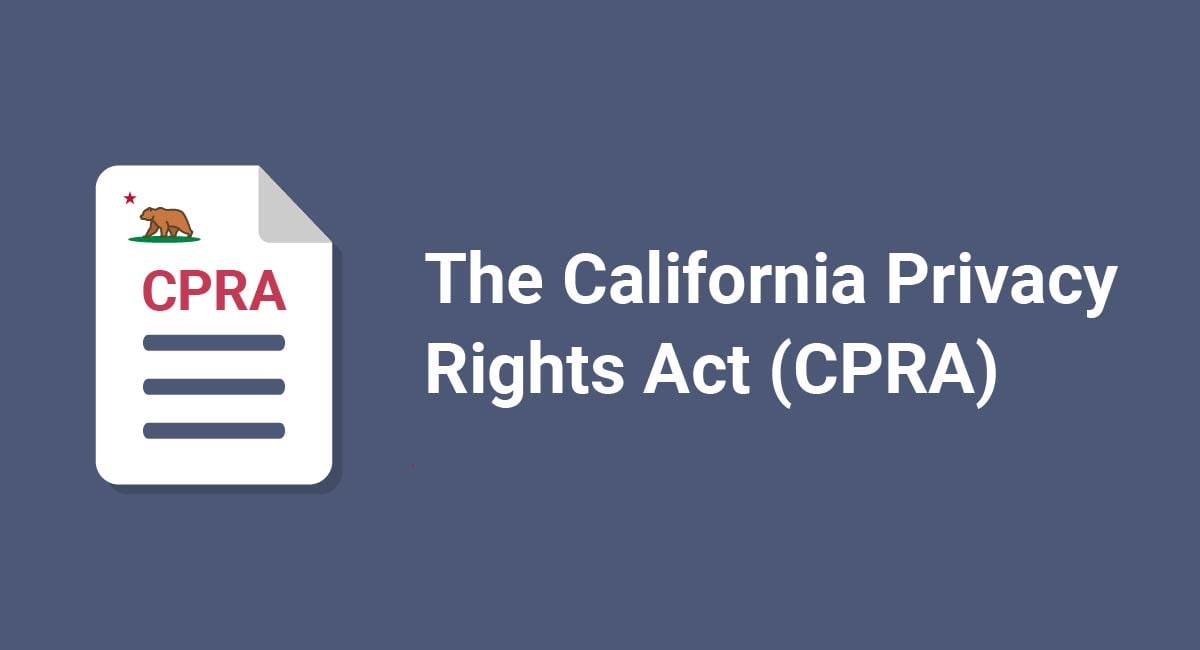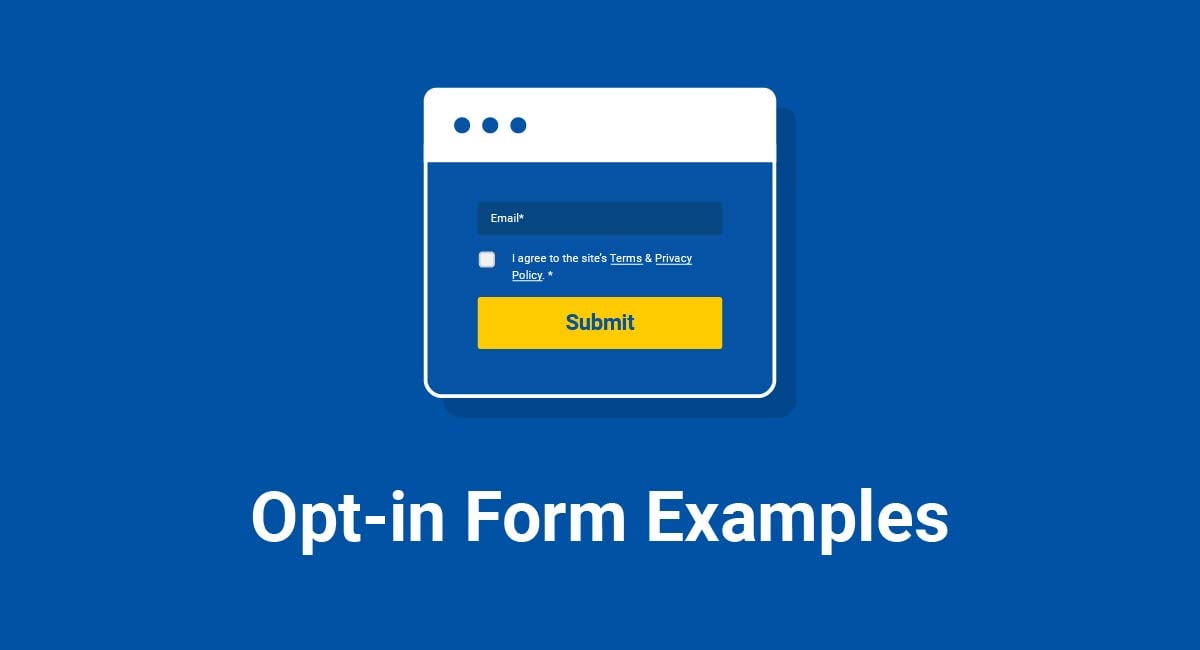Links are an essential feature of the Internet and its functionality. They provide a structure for the vast amount of information available and are a key technique for SEO practices such as backlinking. They also enhance user experience by helping to navigate content and quickly access additional information on a topic.
But linking to other sites as sources potentially raises copyright issues and you need to proceed with caution.
In this article, we take a look at the issue of copyright when it comes to different types of links on your website, as well as the steps you can take to ensure your links don't breach any copyright restrictions.
TermsFeed is the world's leading generator of legal agreements for websites and apps. With TermsFeed, you can generate:
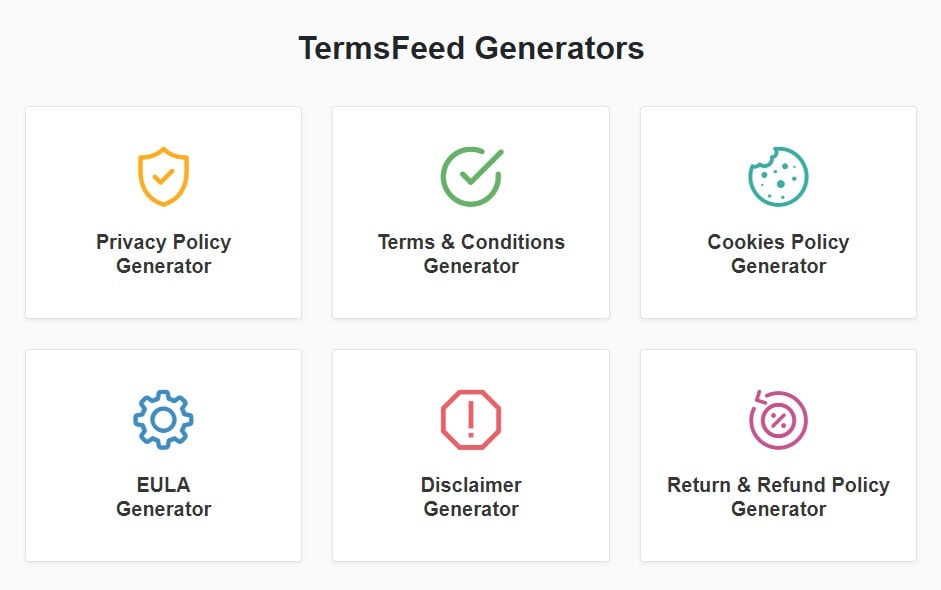
- 1. What is Copyright?
- 2. Different Types of Links
- 2.1. Deep Linking
- 2.1.1. Contributory Copyright Infringement
- 2.1.2. Circumventing Copyright Controls
- 2.2. Inline Linking/Embedding
- 2.3. Framing
- 3. Best Practices to Avoid Copyright Infringement
- 3.1. Cite Your Sources
- 3.2. Have Linking Agreements
- 3.3. Post Linking Disclaimers
- 3.4. Check a Website's Terms and Conditions Agreement
- 3.5. Respond Quickly to Infringement Notices
- 4. Summary
What is Copyright?
Copyright is a category of intellectual property law relating to the legal ownership of a piece of work. It protects an owner's interest in their original work by giving them certain rights over it and excluding others from exercising these rights without the owner's permission.
When someone creates an original work, they automatically own the copyright to it. This gives them the right to reproduce and distribute it how they like. Someone else can't copy or distribute the work without the owner's permission. Doing so would be a copyright infringement.
Individuals can also register their copyright for added protection, but it isn't a requirement in order to obtain the copyright. At minimum, you should create a copyright notice and display it with your protected content.
Copyright infringement is related to but separate from trademark infringement, which can also occur as a result of linking practices.
Both are intellectual property law issues protecting an owner's right to an asset. However, while copyright is concerned with original works, trademarks protect assets associated with a business identity (for example, logos and slogans).
Different types of links raise different copyright issues. Let's look at that next.
Different Types of Links

The most common linking techniques are:
- Deep linking
- Inline linking (or embedding)
- Framing
Deep Linking
Deep linking involves linking to a page on an external site other than its home page, usually using a coded word or image. Rather than directing users to a site's homepage where they can then navigate to the relevant page, a deep link sends them directly to the source page.
It's a common practice for referencing source material and backlinking purposes.
For example, in the below article from The Guardian, a deep link to a research note by the Food and Agriculture Organization (not its homepage) is inserted to support a statistic about the loss of crop diversity:

Deep linking is generally not considered a copyright violation. By taking them directly to the external source site, users are unlikely to perceive the content as belonging to your site. This minimizes the risk of copyright violations.
However, some sites prohibit deep linking, preferring to direct traffic through their main page. This may be for revenue purposes or so users see the necessary legal notices before continuing on a site. Before deep linking to a page, check a site's Terms and Conditions agreement closely.
If you use a deep link that directs users to the following, it may raise issues called contributory copyright infringement and circumvention of copyright controls, respectively:
- Copyrighted material, or
- A site or program designed to circumvent protected copyrighted material
Contributory Copyright Infringement
You can be indirectly liable for copyright infringement via the concept of contributory copyright infringement.
Contributory copyright infringement involves knowingly linking to work that infringes copyright. Doing so is viewed as encouraging or inducing others to view it and contributing to a violation of copyright.
As knowledge is an element of contributory copyright infringement, if you link to another site unaware that it violates copyright, you may not be liable. However, if you're later notified of a potential copyright violation, you should remove the link immediately to try and minimize any liability for contributory copyright infringement.
Circumventing Copyright Controls
The Digital Millennium Copyright Act (DMCA) legislates digital creators' rights over their work. It includes a prohibition against circumventing technological measures designed to protect digitally copyrighted works, such as encryption or watermarks.
If you deep link to a site or program that provides users with access to this kind of technology, you may be liable under the DMCA.
If you unknowingly link to a site that does this, you're generally not liable as long as you remove the offending link as soon as you receive notification under the DMCA.
Inline Linking/Embedding
Inline linking uses HTML code to link to and display content (usually a graphic or video) from an external site. Also referred to as embedding, the link acts as a window, retrieving content from the source website and then displaying it on the primary site.
Inline linking is often used to aggregate content from multiple sites on a single page.
An example of this is Google Image Search. When a user searches for a term, such as "sunflower" in the below example, Google collates a series of embedded thumbnail images from various other sites:
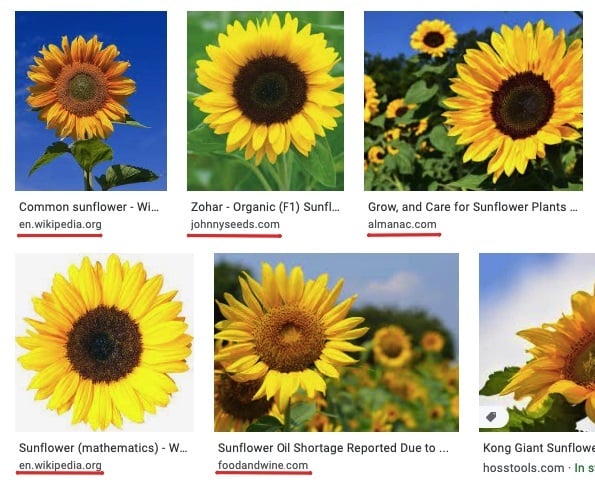
When it comes to inline linking, the issue of copyright infringement often arises in the context of thumbnails.
Previous cases in the US have found that inlined links to thumbnails don't infringe on copyright on the basis of fair use principles (Kelly v Arriva Soft Corp., 336 F.3d 811 (9th Cir. 2003) and Perfect 10, Inc.V. Amazon.com, Inc., 508 F.3d 1146 (9th Cir. 2007)).
These decisions relied on the "server test," which says that inline linking doesn't create a copy of the source content, as defined by the Copyright Act. This is based on the fact that the secondary website only displays the content, rather than hosting it on its servers.
However, subsequent cases have rejected the server test. So the position on inline linking and copyright is unclear. Inline links may violate copyright laws.
Framing
Framing is a technique used to divide a web page into HTML sections. Each section contains a coded link that imports content, such as text or an image, from an external site and displays it on the primary site. When a user views a framed web page, they're connecting to the primary site, rather than the site responsible for creating the content.
Framing in itself isn't illegal. It's often used to organize content internally on a site.
But if you're using framing to display content from external sites, you need to proceed with caution. This practice is often viewed as stealing, especially where the source is not clearly displayed, and can lead to legal action.
Framing can result in copyright infringement, especially where the copyrighted material has been modified or the link between the two sites is unclear to users.
For example, in Futuredontics Inc. v. Applied Anagramic Inc., 45 U.S.P.Q.2d 2005 (C.D. Cal. 1998), the court held the framing practice in this instance was a copyright infringement.
While the legal position on framing and copyright isn't definitive, it can be a risky practice, especially where the framed content from the secondary website is modified without permission or the framing implies an affiliation with or approval by the secondary website that doesn't exist.
Best Practices to Avoid Copyright Infringement

When linking to external sites, there are several best practices to follow to limit the risk of breaching copyright laws.
Cite Your Sources
When linking to an external site, always make sure you cite the source. By properly crediting the content creator or owner, you can help reduce the risk of committing a copyright violation.
Have Linking Agreements
A linking agreement is a document signed by a content owner, authorizing someone else to embed or frame the content. You should obtain a link agreement from external websites for deep linking, image links, embedded videos and graphics, and framing.
Depending on the circumstances, a linking agreement can be done informally over email or by drafting a more formal legal document. Either way, the key is to get it in writing.
Post Linking Disclaimers
To further protect you and your site from any copyright infringement claims, you should add a linking disclaimer to your homepage. Linking disclaimers typically wave liability for any unauthorized activity and deny any endorsement of linked materials.
Widener University's Delaware Law School's linking disclaimer clearly states that its links don't amount to an endorsement, nor is the school responsible for legal issues associated with the external site:

The U.S. Department of Defense's external links disclaimer builds on this by including contact details so users can report inappropriate links:

While a linking disclaimer won't relieve you of all liability for linking copyright infringements, it may help limit any damages ordered in a judgment against you.
Check a Website's Terms and Conditions Agreement
Many sites have their own rules around linking practices such as deep and inline linking. When linking to an external site, always check its Terms and Conditions for any restrictions on linking to its content.
For example, YouTube's Terms of Service currently appear to allow other websites to link and embed YouTube videos, with potential exceptions:
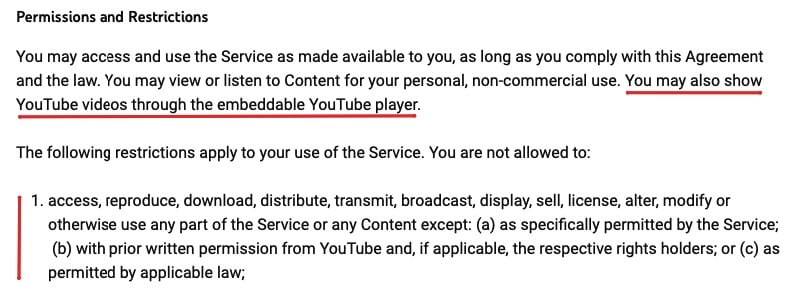
AACE International has a dedicated and detailed Logo and Website Linking Agreement that sets out its rules and requirements for organizations and individuals who wish to link to its site. (Note that this is just an excerpt of the full agreement):
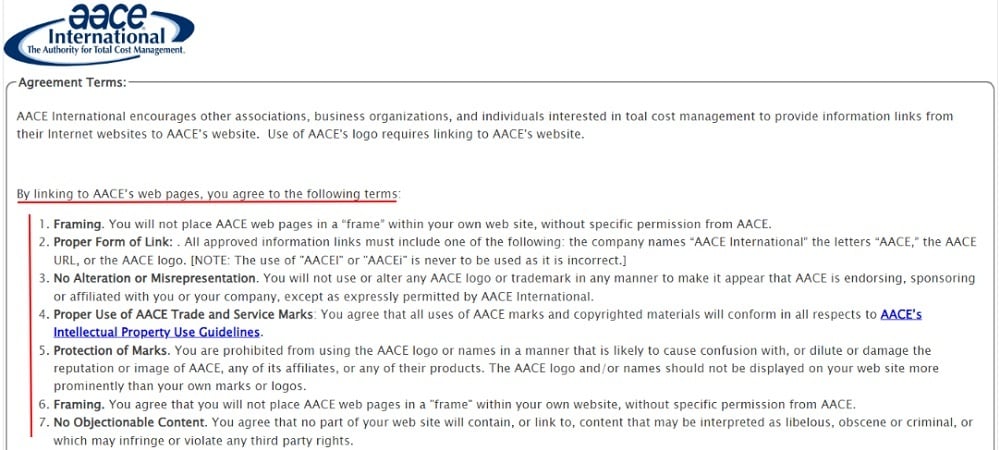
Following the linking rules set by a source site further helps to prevent any copyright violations.
Respond Quickly to Infringement Notices
If a content owner is concerned by your use of their content via linking, they will typically contact you in the first instance to notify you of the alleged copyright infringement.
If you receive an infringement notice, it's best to respond to it as quickly as possible by removing the offending link. This will hopefully prevent the matter from escalating or resulting in legal action.
Summary
Although a necessary and typically legitimate feature of most websites, linking can raise potential copyright issues.
Common sense practices such as citing sources and checking the Terms and Conditions of a source site will help reduce your risk of committing copyright infringement when linking. In addition to these, the use of linking agreements and disclaimers also helps to ensure your site's linking practices don't violate any copyright laws.

Comprehensive compliance starts with a Privacy Policy.
Comply with the law with our agreements, policies, and consent banners. Everything is included.
